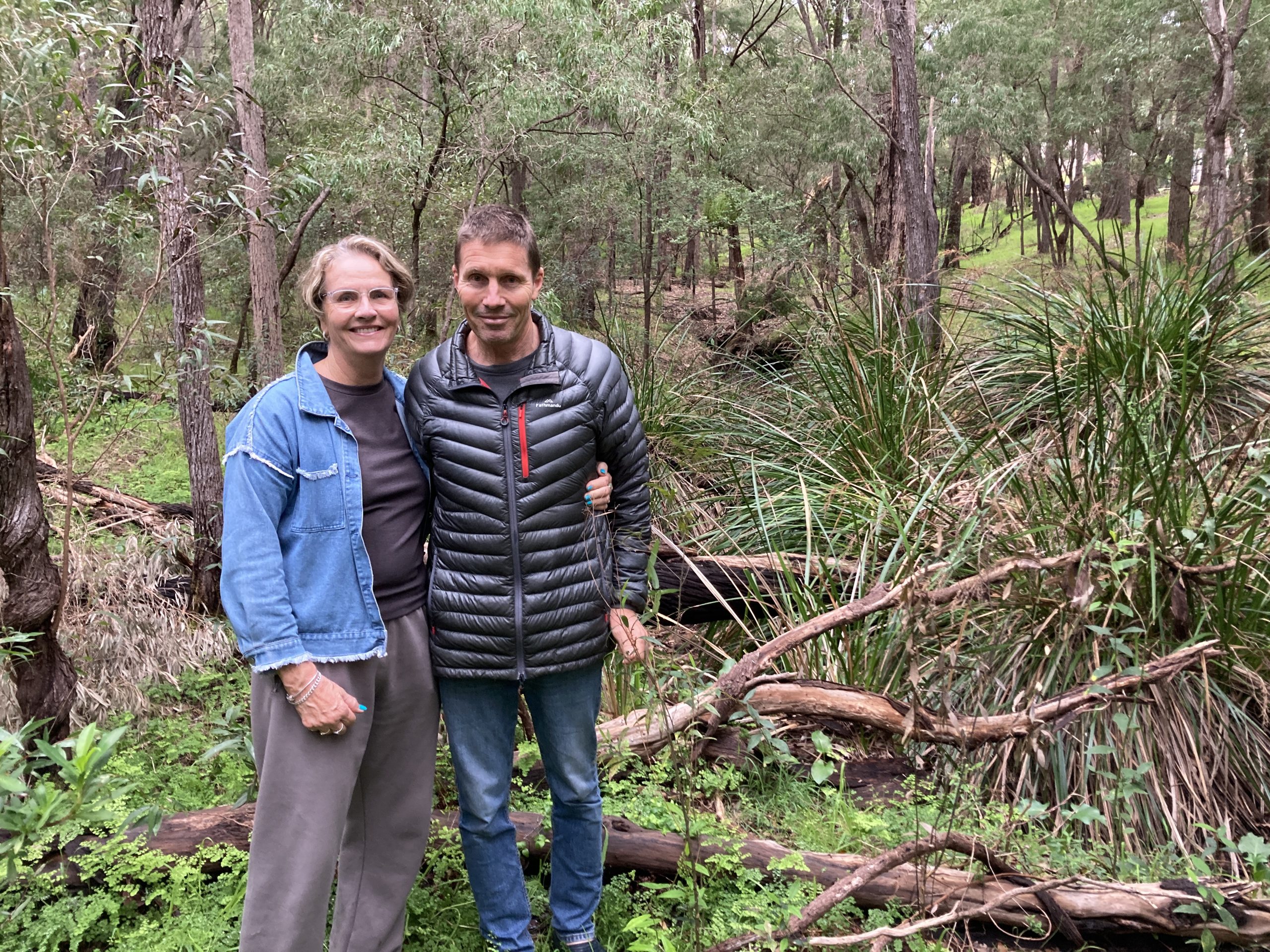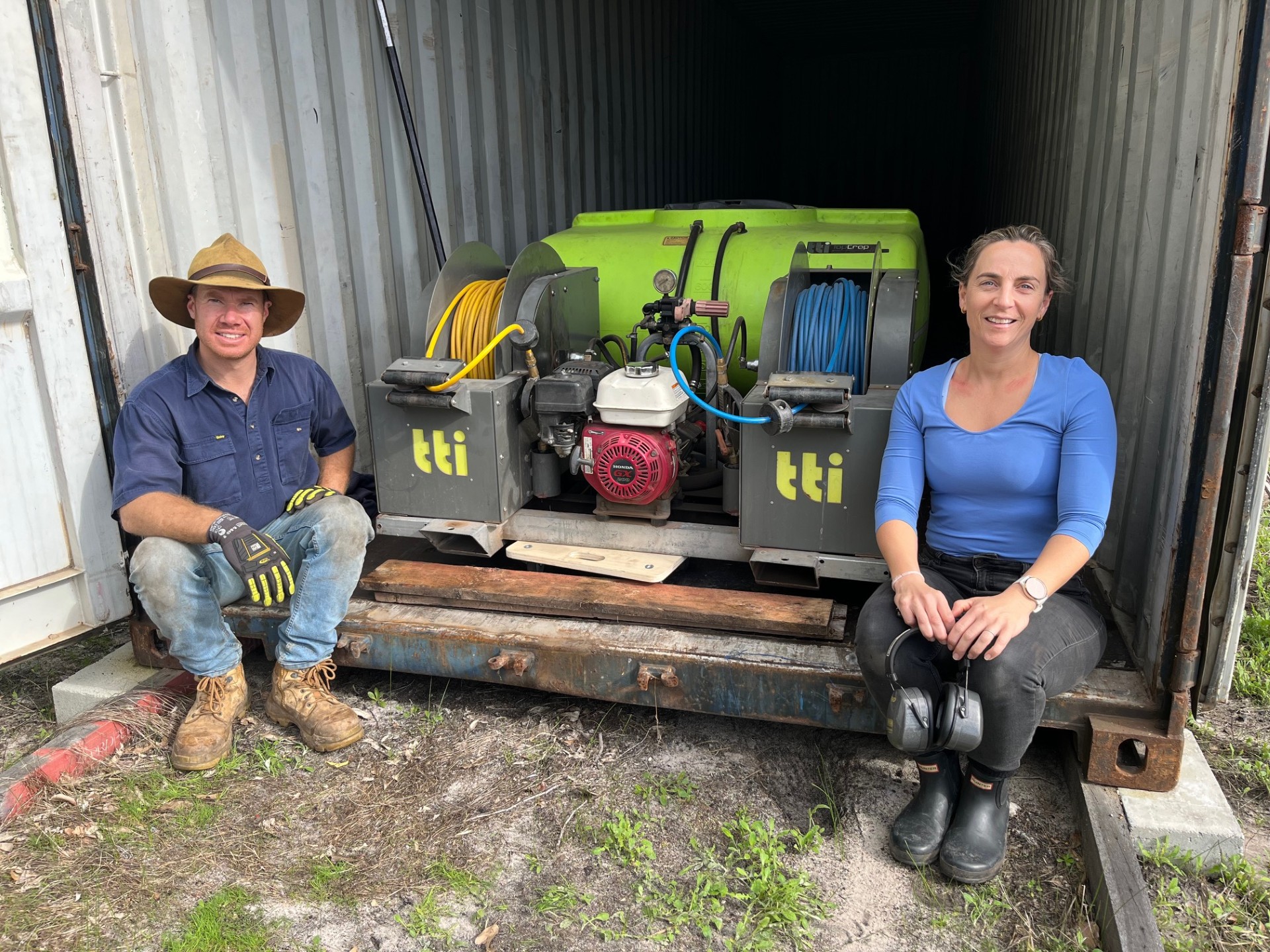Couple tackle eco-problem at home
With a property just a stone’s throw from the Margaret River, local GP Graham Velterop and his wife Toni say that keeping invasive arum lilies at bay is a key responsibility for landholders like them.
The couple are just two of hundreds of landholders who are now part of Nature Conservation Margaret River Region’s hugely successful Arum Lily Blitz, which is in full swing for the seventh year with some exciting new offensives to stop arum lilies, protect bushland and save habitat for our wildlife.
“I hate the buggers. They’re an invasive species. They displace native plants. And I don’t like weeds full stop – especially arum lilies,” says Graham, who bought the 1.4ha block on Doyle Place near Kevill Falls with Toni in 1997.
At first, there was just a smattering of arum lilies.
But as the weeds took over and more seed was spread by birds, a decade ago the winter creek and bushland on the property had become totally infested with the invaders.
“It looked overwhelming and was very disheartening,” Graham recalls.
But with the help of Nature Conservation and local bush regenerator Rick Ensley, the couple tackled the weeds with a program of spraying, using a highly targeted herbicide which is available free to landholders as part of the Arum Lily Blitz.
“The results were incredible. It made a huge difference in the first year,” Graham says.
“There’s been a vast reduction, by about 95 percent I’d say.
“Now all we need to do is a little bit of ongoing work and knock back a few here and there to keep on top of it.
“It’s a no-brainer really.”
With arum lilies under control and native flora thriving, the couple say there is ample habitat for an abundance of wildlife.
“There are heaps of birds, mostly the little understorey birds – the fantails and honeyeaters,” says Graham.
“We also have heaps of black cockatoos coming to eat the marri seed.
“And possums – mainly ringtails – as well as phascogales making a hell of a racket in the mating season, and quendas of course, and frogs as well.”
An ongoing challenge for the couple is to convince neighbouring landholders to do their bit when it comes to arum control.
“I suspect that’s where a lot of re-seeding comes from, so it’s really something we all have to get on board with.”
Graham;s advice for other landholders faced with the invasive species is to make a start.
“It may seem disheartening, but I’m impressed with how rapidly a spraying program can reduce the load.”
There are already 2000+ landholders signed up to the Blitz spanning 23,000 hectares across the region.
Meanwhile, the Arum Lily Blitz model is being rolled out well beyond the Shire’s borders to neighbouring shires including Busselton, Capel and Bunbury, expanding 10-fold the area where the plants are being controlled
To get involved, visit www.natureconservation.org.au where you can join the Arum Lily Blitz, stay up to date, access free herbicide, hear about cost-sharing opportunities, and connect with a wave of community-wide positive action for nature and climate.
“There are many ways you can contribute. You don’t have to own land, live on a bush block or even have arum lilies at your place to do your bit,” program officer Obelia Walker said.
“You can also get involved by downloading our weed mapping app called Fieldbook and reporting weed sightings in the national park, reserves, bushland or road verges. This allows us to map infestations, prioritise control and make good decisions.
“In springtime, we encourage people to snip off any arum lily flowers they come across to stop seeds from spreading, although you want to watch out for the sap and wear gloves.”
Arum lilies are so harmful because they outcompete native plants, reduces habitat and food for wildlife, smother orchids and wildflowers, and swamp native plants in a dense, toxic monoculture.
The wide-leafed plants start appearing from underground tubers in winter and produce a white flower in spring, and large-scale control is only possible with a targeted herbicide.
The Arum Lily Blitz also partners with government agencies, landholders, and community and volunteer groups like the Friends of the Cape to Cape Track against the threat of arum lilies, while supplying free herbicide, training, education and support.
It’s the first coordinated, landscape-scale weed control program of this type in WA, with an ambitious, long term 20-plus year vision to reduce and contain the weed.
“Success relies on persistence and teamwork. So spread the word to your neighbours, be an advocate, and share your arum lily control success stories with us, your friends and family, and even on social media,” Obelia said.
For landholders on larger properties who cannot deal with infestations on their own, Nature Conservation’s Bush Regeneration Team can be hired.
See natureconservation.org.au to find out more, register, and receive free herbicide and resources.
















